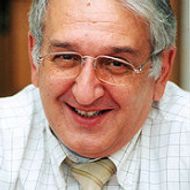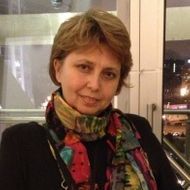- A
- A
- A
- ABC
- ABC
- ABC
- ąÉ
- ąÉ
- ąÉ
- ąÉ
- ąÉ
- HSE University
- Faculty of Economic Sciences
- Department of Mathematics
- News
- HSE Seminar on Political Economy: Lauren A. McCarthy (University of Massachusetts Amherst) about the consultative bodies attached to government agencies in Russia
-
The Department
109028, Moscow, Pokrovsky Boulevard 11, T423
Phone: +7 (495) 621 13 42,
+ 7(495) 772 95 90 *27200; *27212.
Email: dhm-econ@hse.ru; shatskaya@hse.ru

 New Centrality Measures in Networks: How to Take into Account the Parameters of the Nodes and Group Influence of Nodes to Nodes
New Centrality Measures in Networks: How to Take into Account the Parameters of the Nodes and Group Influence of Nodes to Nodes
Aleskerov F. T., Shvydun S., Meshcheryakova N.
CRC Press, 2022.
Belenky A., Fedin G., Kornhauser A.
International Journal of Public Administration. 2021. Vol. 44. No. 13. P. 1076-1089.
In bk.: AIP Conference Proceedings. Vol. 2328: ICMM-2020. AIP Publishing LLC, 2021. Ch. 060001. P. 060001-1-060001-4.
Zlotnik A., Kireeva O.
math. arXiv. Cornell University, 2020. No. arXiv:2011.14104v2[math.NA].

HSE Seminar on Political Economy: Lauren A. McCarthy (University of Massachusetts Amherst) about the consultative bodies attached to government agencies in Russia
Topic: "Managed Civil Society and the Realities of Police Oversight in Russia"
co-author: Katherine Stolerman and Anton Tikhomirov
Abstract:
In recognition both of the importance, and also the changing nature of┬Ācivil society in Russia under President Vladimir Putin, this paper┬Āseeks to shed light on the workings of consultative bodies attached to┬Āgovernment agencies, called obshchestvennyi soveti (OS), or public┬Ācouncils. In particular, we examine the councils attached to the┬Āpolice (MVD). A 2011 law required that such councils, which were┬Āpreviously present in some regions and cities, be established in all┬Āregions across the Russian Federation. It empowered them to gather and┬Āpresent information on the work of the police, make recommendations,┬Āadvise on laws and regulations, ensure citizens are informed of police┬Āprograms, and provide general oversight for police activities. This┬Āpaper explores what kinds of citizens make up these bodies, and what┬Āactivities the councils actually participate in. To this end, we┬Āanalyze membership lists, coding for gender, occupation, and other┬Ārelevant characteristics that indicate which sectors of society are┬Ārepresented. We also study organizational documents such as work┬Āplans, meeting reports, and news stories, as well as information like┬Āterm length, commissions, and working groups from council websites in┬Āthree federal districts (Northwest, Central and Volga) covering┬Āapproximately 50% of RussiaŌĆÖs population.┬Ā We find that contrary to┬Āexisting literature's claims that these bodies are simply window┬Ādressing, regional OSŌĆÖs are often made up of highly qualified and┬Āeducated citizens from legitimate civil society organizations, as well┬Āas from academia, business, media, and some former law enforcement┬Āagencies. Furthermore, while, as expected, OSŌĆÖs do focus on promoting┬Āa positive image of the police and avoid politically charged work,┬Āthey also are actively engaged in their regions sponsoring programs┬Āaimed at road safety, reducing crime and corruption, countering┬Āterrorism, engaging with local youth, and overseeing police personnel┬Āand police activity.
the joint seminar of Higher School of Economics on political economy, International Center for the Study of Institutions and Development (ICSID) and NES Center for the Study of Diversity and Social Interaction was held┬ĀMay 30.
- About
- About
- Key Figures & Facts
- Sustainability at HSE University
- Faculties & Departments
- International Partnerships
- Faculty & Staff
- HSE Buildings
- Public Enquiries
- Studies
- Admissions
- Programme Catalogue
- Undergraduate
- Graduate
- Exchange Programmes
- Summer Schools
- Semester in Moscow
- Business Internship
-
https://elearning.hse.ru/en/mooc/
Massive Open Online Courses
-
https://www.hse.ru/en/visual/
HSE Site for the Visually Impaired
-
http://5top100.com/
Russian Academic Excellence Project 5-100
- © HSE University 1993–2025 Contacts Copyright Privacy Policy Site Map
- Edit

